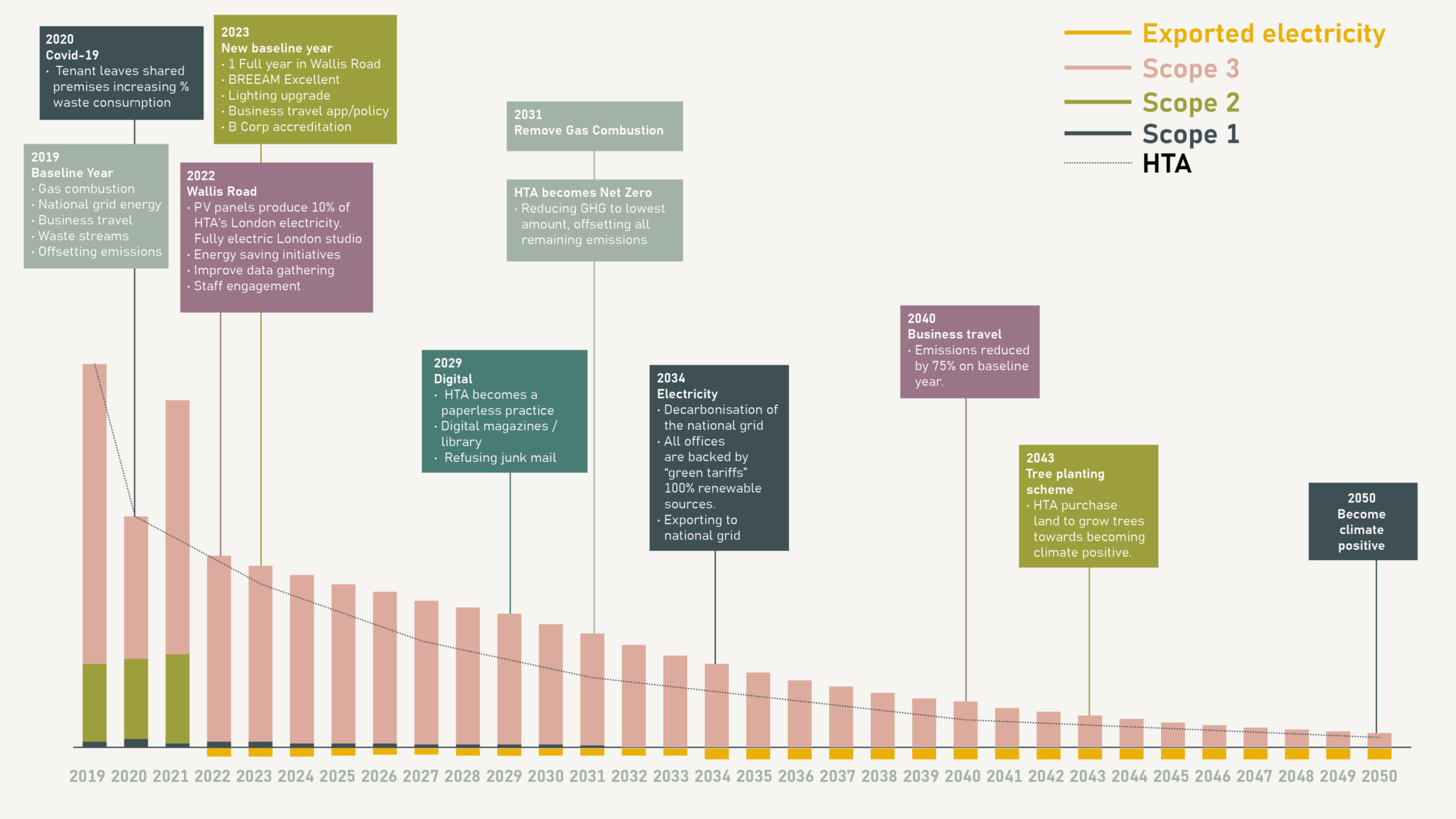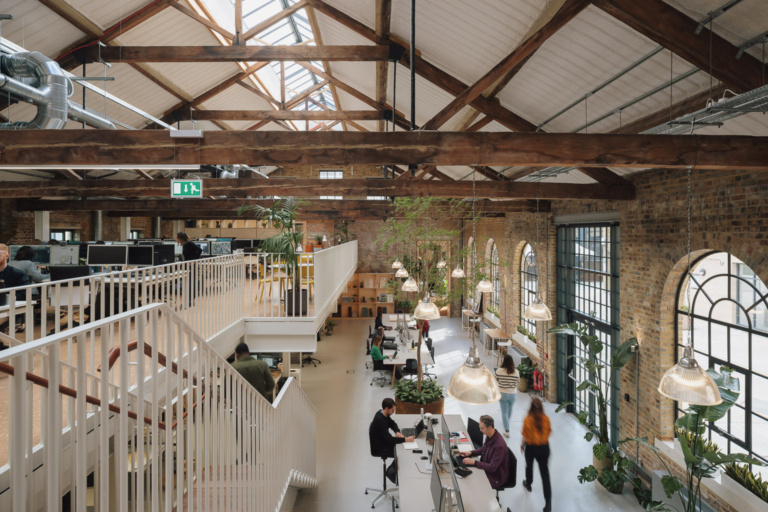HTA has a robust environmental management system as part of its ISO14001:2015 certification which, along with B Corp, provides accountability and areas for improvement. We believe in being open and transparent in our carbon reporting and publish our annual carbon reduction plans.
Since 2019, HTA has meticulously recorded its carbon emissions using the GHG Reporting Protocol, an industry-standard methodology for its London, Edinburgh, Manchester and Bristol studios. This tool enables us to quantify our emissions, including energy consumption, transportation, waste and other operational activities across Scopes 1, 2, and 3.
By applying DEFRA’s conversion factors, we ensure our measurements are both accurate and consistent. Our emissions for the financial year 2023/24 are:
- Scope 1 – 8Tco2e
- Scope 2 – 70.7 Tcoe
- Scope 3 – 14 Tco2e
We track our progress through monthly reporting, quarterly board reviews, and an annual carbon reduction plan. We set ambitious short and long-term targets for reducing our carbon emissions, including eliminating all Scope 1 emissions by 2031. We are on track to achieve this as we have reduced emissions under Scope 1 by 20% since 2019. This involves us lobbying our landlord for our Edinburgh studio to replace the gas heating system with Air-Source Heat Pumps, which is out-with our control, but not outside our sphere of influence.





















